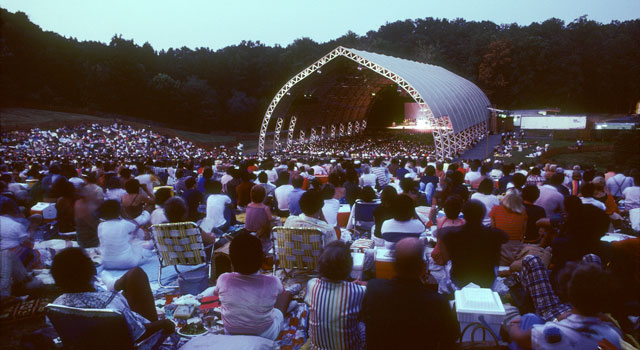Wolf Trap House Speed Dating
May 13, 2020
- You won’t be able to see Rodney Crowell, Karla Bonoff or comedy skits from The Second City at The Barns at Wolf Trap this fall. All live performances have been canceled due to the coronavirus.
- Wolf Trap, (La Trappe; The Trappe). Northeast of the house is an in-ground pool dating to circa 1980. A circa 1980 wood-frame shed clad in plywood simulating.
- NEWHOUSE SPECIAL WOLF TRAP. This trap is known as the No. 4 1/2 or 'Newhouse Special Wolf Trap.' It was put on the market to meet the demands of trappers for a new model of the Newhouse Trap especially designed for capturing the large timber wolves and mountain lions of the stock raising sections of the West.
Before Wolf Trap was the only National Park for the Performing Arts, before legendary artists took the stage at the Filene Center, before The Barns opened its doors, the land we enjoy today was once a farm of over 150 acres owned by Catherine Filene Shouse. “Kay,” as she was known to family and friends, hosted decades of lively gatherings at her country home.
Newhouse passed away in 1888, but the trap making continued, as has his legacy as America’s master trap maker. 5 traps made from 1895 to 1905 reads S. Newhouse Kenwood N.Y. At the same time, Oneida also made the No. 15, which is the same as a No. 5 but with offset jaws exposing the teeth between the jaws; two smaller bear traps.

With her passion for the arts and gift to the nation more than 50 years ago, Mrs. Shouse ensured that her beloved Wolf Trap Farm would remain synonymous with hospitality, performing arts, and nature. Wolf Trap Members have safeguarded its vibrancy ever since and provide a connecting link from the past to the future at Wolf Trap.
Wolf Trap House Speed Dating Online
Patrons enjoy a picnic surrounded by the beautiful landscape and one of the log cabins that can be found at Wolf Trap.
Of course, the land had a long history before Mrs. Shouse purchased her first parcel in 1930. Reports from the 17th century cite the trapping of wolves that preyed on the region’s livestock. This inspired the creek’s name, Wolf Trap Run.

Three centuries later when this property served as Mrs. Shouse’s home, her family and friends, renowned artists, and political leaders would relax in the natural beauty of the landscape, away from the stress of city life.
Today, you can see signs of Wolf Trap Farm’s history located near Mrs. Shouse’s original farm house. This white house, sections of which date back to the 1700s, is located to the left of the Filene Center main entrance and serves as the administrative offices for Wolf Trap National Park for the Performing Arts. Nearby are several log cabins of varying origins, a few of which date back significantly. The smallest of the cabins is referenced as the “smoke house.”
Another of the cabins was relocated to the property by Mrs. Shouse in 1948 from Fredericksburg, VA. It is reported that a sword and scabbard and a Union soldier’s belt buckle were found under the house during the move and donated to the National Park Service. Once a house for family and guests, this cabin now serves as seasonal offices for the NPS and U.S. Park Police.
A log cabin brought to the property in 1948, now used as seasonal offices for NPS and the U.S. Park Police.
In addition to her gardens, Mrs. Shouse had a stone kennel for her prized pet boxers. She also raised many of the farm animals one would expect: chickens, ducks, turkeys, cows, pigs, and horses. A stable and hay barn accommodated the horses, and riding them was reported to be a favorite activity of family and friends. Reminiscent of her fondness for horses, a cast iron hitching post decorated with a horse-head finial can be found in a small flower garden near the farm house.
As you walk near the cabins, keep your eye out for this cast iron hitching post in one of the small gardens.

Completing the farm and directly behind the house is a large farm bell. You will hear it these days signaling patrons that it is time for the show to begin!
On your next visit to Wolf Trap, look for these treasures, which harken back to an earlier time – and mark a great spot for a picnic or a Wolf Trap selfie!

You might hear the ringing of this farm bell before the start of a show.
Since the earliest days of Wolf Trap Farm, the world has changed in many remarkable ways. Technology has revolutionized our day-to-day lives, and the newest gadgets are introduced at rapid speed. As innovation races forward, experiencing the beauty of bucolic open spaces on a summer day, soaking up the magic of a live performance, and creating lifetime memories with family and friends become even more rare and precious.
Regardless of the changing times, Mrs. Shouse believed that the arts and nature remained at the center of the human experience — inspiring, educating, entertaining, and building community. As land development moved further west from Washington, DC, she committed herself to preserving this experience for future generations, determined to turn her vision into reality by creating a gift that would grow and inspire beyond her lifetime.
In honor of her enduring gift, a bronze bust of Catherine Filene Shouse was presented by her friends in 1974, sculpted by Elaine Pear Cohen.
Today, we have Catherine Filene Shouse to thank for this tremendous place and experience. Annual support from Wolf Trap Members today and consideration of a legacy gift for tomorrow, will ensure that Wolf Trap thrives for the next generations of family and friends picnicking on the lawn and breathing in the evening air under the stars at Wolf Trap.
Wherever I am when I depart this world I’ll be watching Wolf Trap and all who accept the responsibility of carrying out my deep desire that it brings peacefulness, pleasure, and outstanding programs for people, young and old.
Catherine Filene Shouse (1896-1994)Learn more about:
To discover how you can make a lasting impact on future generations at Wolf Trap, please contact us at 703.255.1930 or legacycircle@wolftrap.org, or visit www.wolftrap.org/endowment.
Dancing with the (Wolf Trap) Stars
Nov 16, 2020 - Summer
By Tom Parr
Sewell Newhouse was born in Brattleboro, Vermont in 1806. His family moved to Oneida County, New York, when he was 14 years old. As a young man, he spent most of his time in the woods becoming well-acquainted with the local Native tribes. Under their guidance, he became a well-rounded woodsman, especially knowledgeable about the pursuit and capture of wild animals.
Newhouse made his first steel trap when he was 17, crudely fashioned from scrap metal found in his father’s blacksmith shop. He learned how to temper steel from a family friend, and over the next 20 years, usually with a partner or a hired hand, he made many more traps and a few rifles, mostly selling to other local trappers.
In 1849, Newhouse was approached by John Humphrey Noyes, who had just launched a communal living venture on the banks of Oneida Creek, a few miles from Kenwood, New York. The commune was a religious idea, intended to save mankind. It was based on the idea that a perfect life could only be lived if people sacrificed everything to the community’s interest.
Newhouse joined Noyes’ Oneida Community, and there he continued to make steel traps in the old way, by hand.
Wolf Trap House Speed Dating
By 1855, the demand for Newhouse steel traps had grown to such an extent that the Oneida Community leaders decided to begin manufacturing on a much larger scale, and it became a major part of the business dealings of the Community.
In the 1850s, Oneida Community produced a No. 5 and a larger No. 6 bear trap called “The Great Bear Tamer.” It weighed 50 pounds. In 1864, the Oneida Community reported a yearly sale of 30 bear traps; that same year, they sold 7,250 beaver traps. While Newhouse bear traps were well-known, they never were produced in great number.
The earliest model, called a slick pan, had no lettering on the pan. This trap was built in both the No. 5 and No. 6 size from 1850 to 1855. Next came the No. 5 & 6, with a lettered pan that read S. Newhouse Community N.Y. It was made from 1865 to 1888. Newhouse passed away in 1888, but the trap making continued, as has his legacy as America’s master trap maker.
The pan on No. 5 traps made from 1895 to 1905 reads S. Newhouse Kenwood N.Y. At the same time, Oneida also made the No. 15, which is the same as a No. 5 but with offset jaws exposing the teeth between the jaws; two smaller bear traps, the No. 50 and 150, also went into production. During the Kenwood era, for a very short span, Oneida Community built a No. 25 and a No. 35, called the Newhouse Self Setting Bear Trap. It was not well received by trappers and was only on the market for a short time; these are very rare and prized by today’s trap collectors.
From around 1895 to 1911, Newhouse bear traps had S. Newhouse Oneida Community N.Y in raised letters on the pan; they were built in sizes No. 6, No. 5, No. 15, No. 50 and No. 150. From 1911 through 1925, S. Newhouse Oneida Community N.Y PAT. Sept 26-1911 appeared in raised letters on the pans, and collectors refer to these as the patent date model; they were made in all of the same sizes.
In 1925, Oneida sold the trap-making division to Animal Trap Company of America, Lititz, PA, where the Newhouse bear traps were continued in limited production through 1976. The raised letter pan now read Oneida Newhouse Reg.U.S. Pat. Off. Made in U.S.A., Animal Trap Co. Lititz, PA; they were made in sizes No. 6, No. 5, No.15, No. 50 and No. 150.
The value of Newhouse bear traps varies greatly, but all are collectible. Condition and knowing that the parts are original is of most importance when buying these traps. A good No. 6 Slick Pan could bring $8,000 while a No. 5 or No. 15 might fetch up to $800.
Much more information on Newhouse bear traps, accessories, and other bear traps can be found in a book Blaise Andreski and I wrote titled The Collectors Guide - Bear Traps - Model Recognition & Prices; it can be purchased from Sterling Fur Co., phone: (330) 939-3763.
* * *
Wolf Trap House Speed Dating Site
For information on this and other
collectible antique traps, contact:
Tom Parr, the North American Trap
Collectors Association, P.O. Box 94,
Galloway, OH 43119; (614) 878-6011.